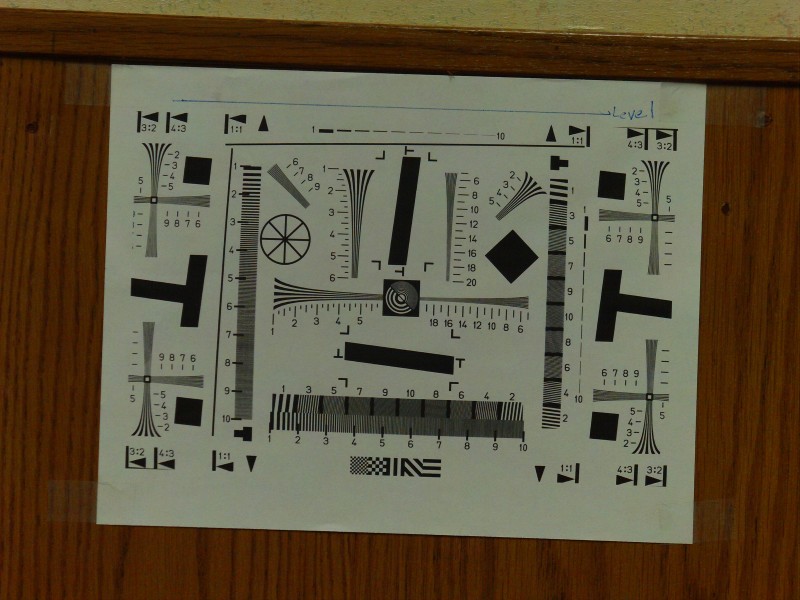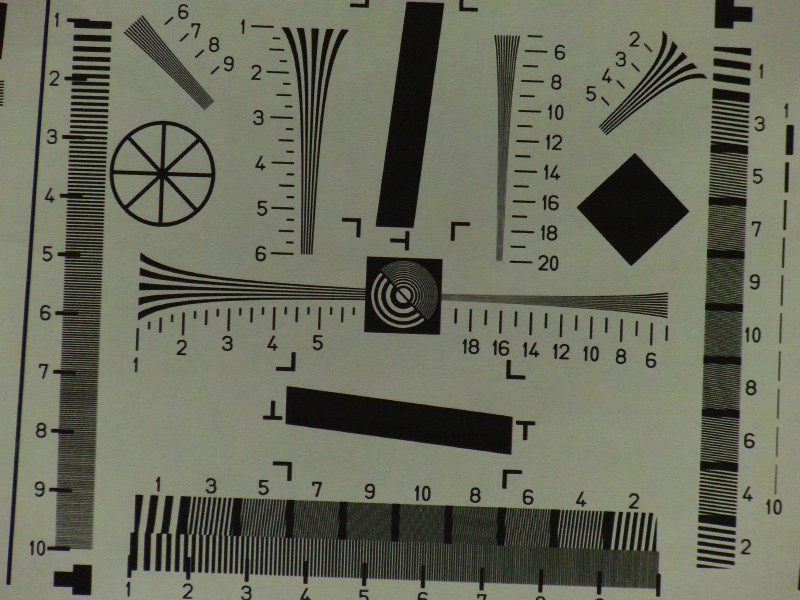all the pros and cons exposed
Copyright © 2011 by KV5R. Rev. July 9, 2011
Shop for HD Camcorders here.
The H5 Extreme is a small digital camcorder capable of full 1080p HD video recording. It is a “hybrid” camera, capable of video, still pictures, voice recording, and if enabled in the firmware menu, mp3 playback. It utilizes a 5 megapixel sensor and stereo microphones. It has a 3-inch widescreen veiwscreen. It will play back video and audio through any television and has both composite A/V and HDMI outputs. It has a stereo microphone input for external mic. It has a USB connector for connection to a computer. Cables, battery, and lens cap are supplied. It will not function as a webcam, and it will not run a remote monitor while recording.
All in all, it does what it says it will do. It is priced at $130 and compares, in features, with some camcorders costing up to twice that much. But it has a number of design deficiencies that limit its usefulness.
- Severe jitter when panning in HD modes (1080p and 720p). It appears to be slow frame rate, but is more likely caused by the data compression engine being unable to keep up with the data rate. This makes the picture jump repeatedly during motion when in the HD modes. It is particularly noticeable on vertical edges during slow to medium panning. It does not jitter in WVGA mode.
- There is little visually discernible difference in resolution between full HD (1080p, 1920×1080) and what they call “WVGA” mode, which is wide 480p (848×480 at 60 fps). I tested it by recording a digital camera test chart at 18–40 inches and viewing on a 23-inch full HD (1080p) Vizio television, using HDMI cable. The chart was no more readable at 1080p or 720p as at WVGA, but fine details (like the texture of the paper) were sharper at the higher resolution (with no motion). Then I tested motion by slow panning and capturing a frame (photos below). For practical home videos, the WVGA mode is fine, and the lower resolution makes for a little smoother picture, a much smoother pan, and much smaller files. Full HD need only be used for tripod shots of distant objects where there is very little motion.
- Data rates and compression:
- I’m using a Class-10 SDHC card that will write at 14.7 MB/s (measured). The camera writes at about 1.1 megabytes per second in full HD mode (including audio).
- At 1080p, MediaInfo shows the data rate at 9,000kbps. Raw rate (1920×1080×30×8) is 497,664,000 bps. ≈55:1 compression ratio. That’s at a bit depth of 8 bits-per-pixel, not 24 or 32. Compressing that to 9,000 is a lot of compression, but since the frames do not look over-compressed (no artifacts), I conclude that the Aiptek camera is throwing away a lot of frames and duping the ones it keeps, and/or reducing key-frames, to maintain 29.97 FPS. Hence the movement jitter. A real HD camera runs a little over 1 gigabit (127 megabytes) per second uncompressed data rate, and is about 25–40Mbps compressed. The H5 Extreme records 1080p at ≈9Mbps (1.1MBps). That’s an approximation, since the compression rate is variable depending on movement—but in both still and panning files, MediaInfo shows the bit-rate as variable but right at 9001kbps, so that’s the rate it’s gonna compress to, regardless of motion. In other words, there’s no “head-room” for increasing the rate during motion shots, hence, all motion shots are blurry.
- At 720p, MediaInfo shows the data rate at 5,000kbps. Raw rate (1280×720×30×8) is 221,184,000. ≈44:1 compression.
- At WVGA, MediaInfo shows the data rate at 4,000kbps. Raw rate (848×480×60×8) is 195,379,200. ≈48:1 compression.
- By comparison, my Lumix LZ8 pocket snapshot camera records both VGA (640×480) and WVGA (848×480) at ≈13,000kbps MJPEG, and the difference is noticeably better, particularly on motion shots. But the files are much larger, since MJPEG compression is much less than that of H.264.
- Transcoding the H5’s H.264/mov files down to 640kbps (for web upload) yields a noticeably better picture than transcoding the LZ8’s MJPG/mov files to the same rate. Not surprising. But the LZ8 takes better video (smoother motion), with its 8 megapixel sensor and 13,000kbps data rate.
- By comparison, an SD-DVD is at about 8Mbps, and 480p DVB (SD satellite TV) is about 2–4Mbps.
- According to the Adobe H.264 Primer, optimal compressed bit-rates may be calculated as follows: X × Y × FPS × Motion Rank (1 to 4) × 0.07 = desired bit-rate in bits per second.
- 1920 × 1080 × 30 × 2 × .07 = 8,709,120 bps (using 2 as the median motion rank)
- 1280 × 720 × 30 × 2 × .07 = 3,870,720 bps
- 848 × 480 × 60 × 2 × .07 = 3,419,136 bps
- …so the H5’s bit-rates are in the ballpark for medium-motion H.264.
- But at the full-motion rank of 4, it’s twice the above figures. This may explain why the H5 jitters during pans in the HD modes—as the motion rate exceeds the maximum of 9 and 5 MB/s, the camera records fewer frames. That would also explain why the H5 does nice, smooth motion at WVGA/60 at 4000 kbps.
- The automatic white balance is poorly calibrated. Under fluorescent lights the whites are yellow, and outdoors the shadows are purple. The manual settings work well, if you remember to go into the menu and change it. It does not have the ability to set and lock, but the manual presets are, in effect, locked.
- The auto-focus is sometimes fast and sometimes quite slow. Shifting the shot from a near to a far object, it will sometimes go the wrong way (more out of focus), then reverse and focus slowly. Other times it zips right to it. The effect is not repeatable, but seems random. The focus can be locked in place, but not manually adjusted. You must auto-focus it on a given object, then lock the focus with a menu setting called AF Lock.
- It will pass-through live video to a monitor, but will not record while a monitor (A/V or HDMI) is plugged in. Thus, it cannot run a remote monitor or milliwatt transmitter for use on steadicams/jibs/booms or RC devices such as airplanes and helicopters. This severely limits its use, since you can’t use a remote monitor while recording. Framing yourself by looking at its 3-inch display is pretty useless from 20 feet away…
- It has a “NightShot” mode that increases the imager’s gain in low-light. It has two problems: (1) its low-light mode is very noisy, flooding the frame with red and purple garbage; and (2) it does not reliably switch between low- and normal-light modes. I tested it in a dark room with a small light from one side. Turning toward the light would switch it to normal; then turning partially away would switch it to low; then further turning toward darkness would switch it back to normal (and a black screen). It was not repeatable, but random. So the feature is both useless and unreliable. Fortunately, can be disabled.
- USB connection to Computer—all you can do is copy files from the camera; you can’t copy files to it or delete files—the files are “locked” while the camera is on. You have to copy your files, then unplug the USB, then turn the camera back on and delete the files via a menu—else pull the SD card out and plug it into the computer. Also, the camera can’t be used as a webcam—it has the ability (in the firmware menu) but there is no driver available for it…
- The zoom is sometimes unresponsive or delayed when in HD and Face Tracking is active. Processor overload?
- The photo flash is nearly useless—if within 4 feet or so, the picture is all washed out. Apparently, it does not compensate imager gain or shutter speed for flash.
- The video light is a single blue-white LED, about like a tiny keyfob light. Useless unless you want to light something at 1–2 feet.
- The imager in my copy of the H5 is not mounted straight—it is off by exactly −2 degrees (carefully measured). Level the camera, and everything leans to the right (see photos below). Unacceptable!
- The lens has significant barrel aberration (fish-eye effect), noticeable within 3 feet and severe within 2 feet. This causes close-up straight lines to look curved, as if the flat object is bulged outward. Surprisingly, there is little or no chromatic or spherical aberration.
- The 3-inch TFT display is hard to see outdoors—the surface is too glossy and it reflects everything, particularly your face. It should have a matte finish. Wear a long-billed ball cap.
- It lacks a shoe for top accessories such as microphones and lights. Why does it have an external mic jack when you can’t mount a mic on top? And how much extra would a simple cold-shoe cost? $2?
- The audio is filtered to be very tinny, both with the internal and external mics. Treble is extreme, and bass is nil. Good for picking up voices amidst winds, but not natural-sounding at all. They really should put in a menu item for adjusting the audio equalization. Though it records in stereo, the two internal mics (in the front of the viewscreen) are very close together and they record no discernible separation. One the other hand, the external mic jack is smart—plug in a mono phantom-powered mic (i.e., a computer headset) and it records to both channels (in mono); plug in a stereo self-powered mic and it records in stereo. They got that bit right! Many stereo cameras will only record on one channel when a mono mic is plugged in.
- It lacks threads for filters, hoods, and other lens accessories. This is particularly annoying since the lens barrel is 36mm I.D. and could easily be threaded for the common 37mm lens accessories. The outside of the lens barrel is 45mm O.D. and I’ve added a 46mm female ring to it (see filter threads article).
- The photo function is sub-par. It has 3, 5, 8, and 12 megapixel settings, but the imager is 5 megapixels and the 8 and 12 settings are “interpolated.” Using a digital camera test chart, there was no discernible difference between 5, 8, and 12. In all photo resolutions, the shutter speed is too slow and pictures are blurred by the least movement, even in full sun. There is no manual ISO setting, nor any indication of its current shutter speed. There are no auto, program, scene, or manual settings for photos—just resolution and flash. It will take snapshots at the set photo resolution by pressing the snapshot button, and at the set video resolution by pressing the joystick button. It can also take a rapid series of ten shots.
- The viewscreen does not show the same frame as the photo taken. The photo will be considerably wider-angled than what the viewscreen shows, no matter where the zoom is set. But it previews the real frame during focusing (button pressed half-way). I suppose it has to be that way, since before you press the button, it’s previewing for the video frame.
- The optional remote control is finicky—it must be pointed exactly at the front of the camera, like all tiny coin-cell powered remotes.
- An extra NP-120 1700ma battery from Aiptek is $30+shipping. Another NP-120, 2200ma, is $5+free shipping from Tmart.com, and the charger is $6. Why do camera-branded batteries cost 5–6 times too much?
In conclusion, the H5 Extreme should be considered an entry-level camcorder for people who just want to shoot basic home videos, but insufficient for even the casual video hobbyist. The jitter during motion shots limit its HD quality, and its lack of shoe, filter threads, and remote monitor support limit its expandability. Otherwise, it does a nice all-around job for a $130 camera, and you can have fun with it.
Pictures
These are reduced to 800 pixels wide so they fit in a web page. They will not appear as do the originals, but are here for comparison.

At 12 MP, 18-inches, with flash. Both the chart and the camera are exactly level.
Notice the -2° imager tilt, the barrel aberration, and the flash overload.

At 12 MP, 18-inches, without flash. 80 watt overhead fluorescent lighting.

At 12 MP, 40-inches, 1× zoom, with flash. The barrel aberration is mostly
gone at 40 inches. Imager tilt remains. Flash is still a bit too hot.

At 12 MP, 40-inches, 1× zoom, without flash

At 12 MP, 40-inches, 5× zoom

Slow pan at 1080p (1280 full-screen capture, reduced to 800)

Slow pan at 720p (1280 full-screen capture, reduced to 800)

Slow pan at WVGA 60fps (1280 full-screen capture, reduced to 800)
Notice that WVGA provides the clearest image when panning.
Video Downsampling with HandBrake
I did some transcoding/downsampling tests converting H.264/mov’s to X.264/mp4’s with HandBrakeCL. In each case, I ran the videos in multiple copies of VLC and stopped them on the same frame, switched back and forth and compared the results. The still videos were of a test pattern shot from a tripod; the panning videos were shot from Stabilizer3 (my homemade “Pilot”-type) spinning the camera. The compared pan speed was what I would call slow, about 15-20 degrees per second. At about 30 degrees per second and above, all was a blur and no comparisons were possible.
- Still, 1080p at 29.97, 9000kbps downsampled to 1000kbps, no discernible difference.
- Panning, 1080p at 29.97, 9000kbps downsampled to 2000kbps, very little discernible difference.
- Panning, 1080p at 29.97, 9000kbps downsampled to 1500kbps, minor blocking.
- Panning, 1080p at 29.97, 9000kbps downsampled to 1000kbps, moderate blocking.
- 2000 is a good minimum rate for 1080p (with this camera).
- Still, 720p at 29.97, 5000kbps downsampled to 500kbps, no discernible difference.
- Panning, 720p at 29.97, 5000kbps downsampled to 1000kbps, no discernible difference.
- Panning, 720p at 29.97, 5000kbps downsampled to 640kbps, minor blocking.
- 1000 is a good minimum rate for 720p.
- Still, WVGA at 59.94, 4000kbps downsampled to 500kbps, no discernible difference.
- Panning, WVGA at 59.94, 4000kbps downsampled to 1000kbps, no discernible difference.
- Panning, WVGA at 59.94, 4000kbps downsampled to 500kbps, minor blocking.
- 640-800 is a good minimum rate for WVGA.
- QVGA (Ipod, 320×240) 700kbps downsampled to 300kbps, no discernible difference. Both are equally blurry when zoomed full-screen.
- 200-300 is a good minimum rate for QVGA.
Notes: Blocking is not so noticeable during pans as it is looking at still frames. I was comparing each one paused (still) on the same frame in each case. By “good rate” I mean that no visually significant artifacts (blocking, ringing, etc.) were observed in the downsampled file, compared to the camera file.
In practice, I have observed that shooting at WVGA and downsampling it to 640kbps (with 128kbps audio) makes reasonably good YouTube uploads. This is in an mov or mp4 container, with H.264 or X.264 compression. Thus, a 10-minute video ends up around 50-80 megs, a reasonable upload on ADSL. Since YT is gonna convert it again (and lose a little quality) I’ve started uploading videos downsampled to 1500kbps and they turn out fine on YT.
Stay Tuned!
In the works: I’m building a shoulder-mount, walk-around, 20-foot telescoping jib, with a stabilizer on the end, controlled with 4 fishing lines… Imagine that!
After that, I thinking about building another Merlin-style stabilizer using ¼″ 6061-T6 aluminum.
—KV5R

Hi, thanks for a super review.
Any chance of finding out the brand of cmos sensor used to capture video?